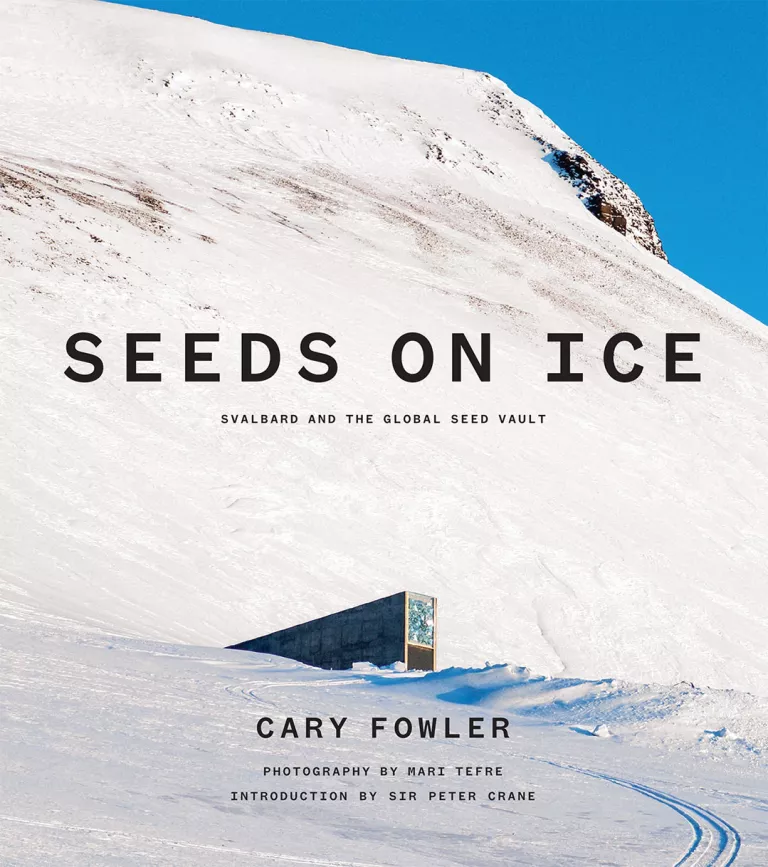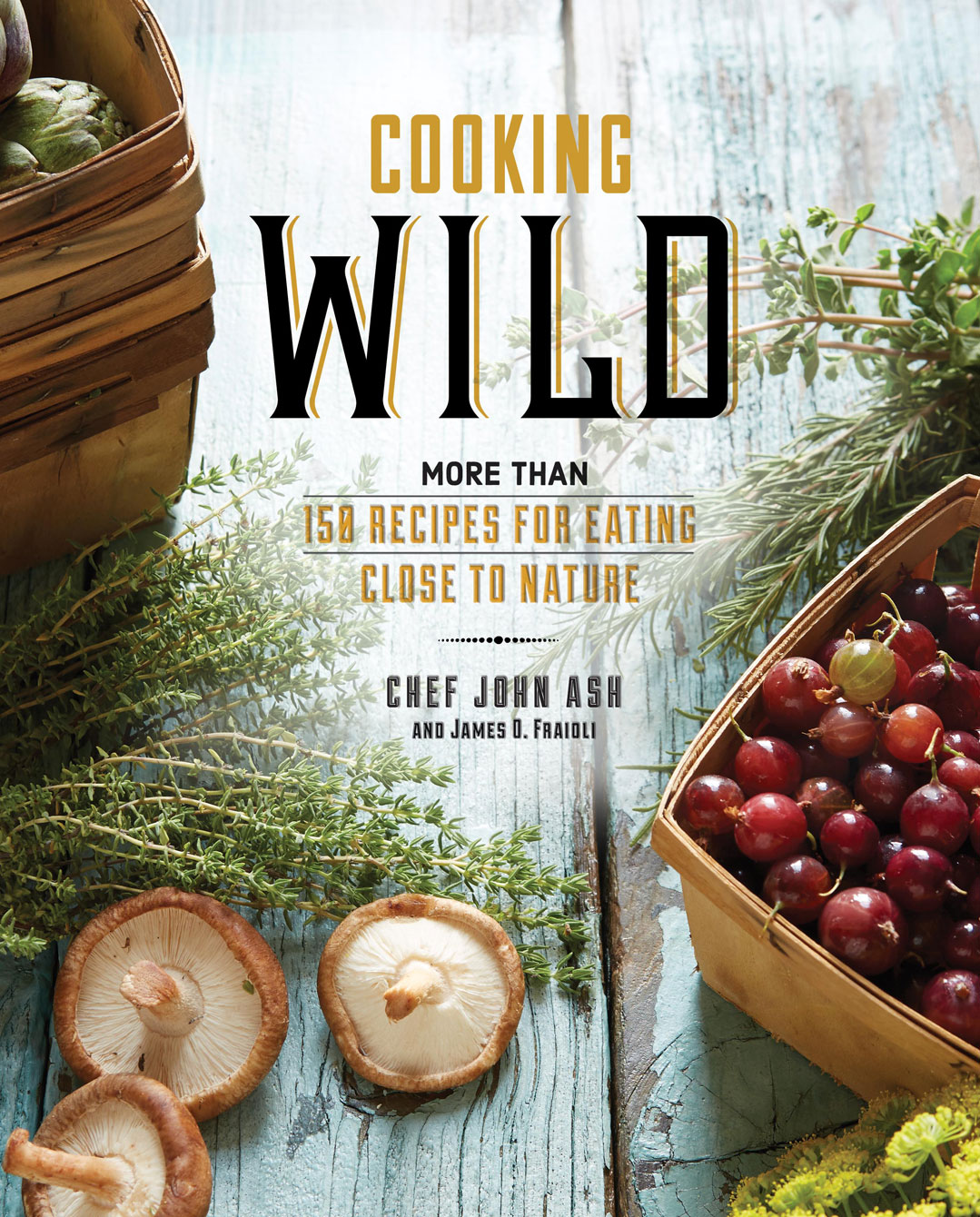From Seed to Skillet
Five new books to get you gardening, cooking, and thinking sustainably

Seeds on Ice. | Photo courtesy of Prospecta Press
As concerns about where and how to ethically source food take root, publishers are responding with a bounty of titles addressing viable seed storage, home crop cultivation, and responsible cooking and eating. Whether you’re a gardener looking to cultivate hyper-local produce or a would-be forager, or simply interested in global food issues, the following books should provide food for thought—and stomach.
Seeds on Ice: Svalbard and the Global Food System by Cary Fowler. This odd, beautiful tome serves as an ode, of sorts, to the world’s only global seed bank, by the man who set the whole thing in motion. Since it opened in 2008, Svalbard, Norway’s frigid Arctic vault, chiseled deep into rock and permafrost, has functioned as a repository for the seeds of 850,000 unique crop varieties from almost every country in the world—our best hope for preserving biodiversity should the bleakest of doomsday predictions befall us. (Perhaps tellingly, war-torn Syria recently made the bank’s first withdrawal.) Clearly and succinctly, Fowler spells out the many reasons to preserve crop diversity—thus ensuring nutritional security and sustainable agriculture in the face of climate change—and punctuates his text with stunning photographs of not only the bank itself, but also of Svalbard and its populations of endangered wildlife. Prospecta Press,$45.
The Minimalist Gardener by Patrick Whitefield. Whether you live in the country, the city, or somewhere in between, one of the surest ways to reduce your carbon footprint is to grow at least some of your own food. However, even the most enthusiastic gardeners can find themselves thwarted by the sheer volume of work involved in planting and maintaining the smallest of plots. Enter this informative volume, which calls on the tenets of permaculture design—that is, design based on what we can witness in natural ecosystems—to help would-be grow-it-yourselfers maximize their time, space, and efforts. Readers learn all there is to know about phenomena such as no-dig plots and self-seeding vegetables, which basically replant themselves, growing season after season. One of the book’s most valuable features is its list of low-effort plants, including those that can thrive despite the neglect characteristic of scarcely visited community garden plots. Chelsea Green Publishing,$20.
Street Farm by Michael Ableman. Written by the founder of the California nonprofit Center for Urban Agriculture, Street Farm documents Ableman’s later efforts to bring viable urban farms to some of Vancouver’s most at-risk neighborhoods. While the book documents his and his partners’ successes—four farms that earn money and provide real work to 25 among the city’s hard-to-employ—its honest depiction of the challenges and failures inherent in the risky, idealistic business of solutions-based agriculture are more eye-opening—especially with so much at stake in such enterprises for America’s food-insecure populations. It’s sufficiently thorough to function as a primer on what to do—and not do—in setting up an urban farm of one’s own. But it’s also a compelling tale in its own right, filled with touching characters, conflict, and ultimately, redemption. Chelsea Green Publishing,$30.

Cooking Wild. | Photo courtesy of Running Press
Squirrel Pie (and other stories): Adventures in Food Across the Globe by Elisabeth Luard. As we drift further and further from the sources of what we eat, we’ve become disconnected, too, from the foods that once nourished and sustained even our most recent ancestors. Sometimes, though, as Luard’s 10 expertly told tales of her global travels reveal, reconnecting with almost-lost food traditions can bring us face to face with such uncomfortable practices as eating bush meat (like kangaroo, once prized by Aboriginals for its nutritional value in a landscape where little else to eat could grow). Still, as Luard points out in the introduction, our forebears had access to an extraordinary variety of foodstuffs. And survival on our famine-threatened planet may well depend on our willingness to look away from the processed foods of the supermarket aisles, and back toward the woodcocks, snails, rosehips, thistles, sea lettuce, chestnuts—and yes, squirrels—still found in abundance. Those with a hankering to actually bake the eponymous squirrel pie will be delighted to discover that this recipe—and about 50 others—are on offer, along with Luard’s poignant observations. Bloomsbury,$28.
Cooking Wild by John Ash and James O. Fraioli. As James Beard Award-winning chef Ash points out at the beginning of this beautifully illustrated cookbook, foraging for plants “can help us maintain our food supply and feed our rapidly growing population.” Done safely and conscientiously, it can also be a lot of fun and yield a truly new crop of dishes. Included are more than 150 recipes, using wild ingredients like cattails, grape leaves, nettles, pine, and wildflowers, along with information about their seasons and properties. Early spring, for instance, is prime time for bright orange cattail pollen, which can enrich and beautify a morning’s batch of pancakes. While it’s unlikely that urbanites, at least, will themselves be hunting down the ingredients needed for, say, bison and black bean chili or sea urchin with linguine, the book’s meat and fish chapters present an intriguing array of recipes employing sustainable proteins that are readily available in the marketplace. Running Press,$35.
 The Magazine of The Sierra Club
The Magazine of The Sierra Club



